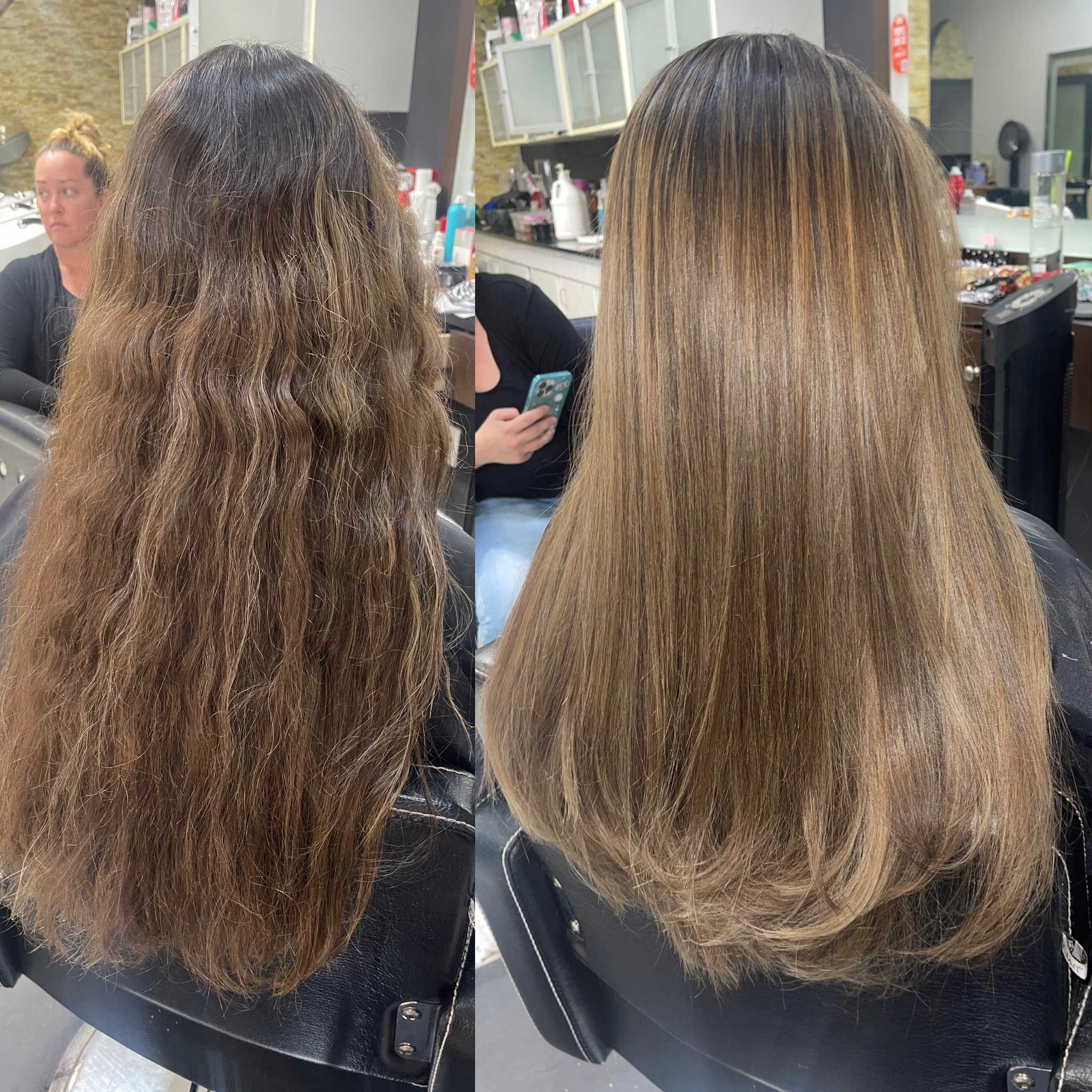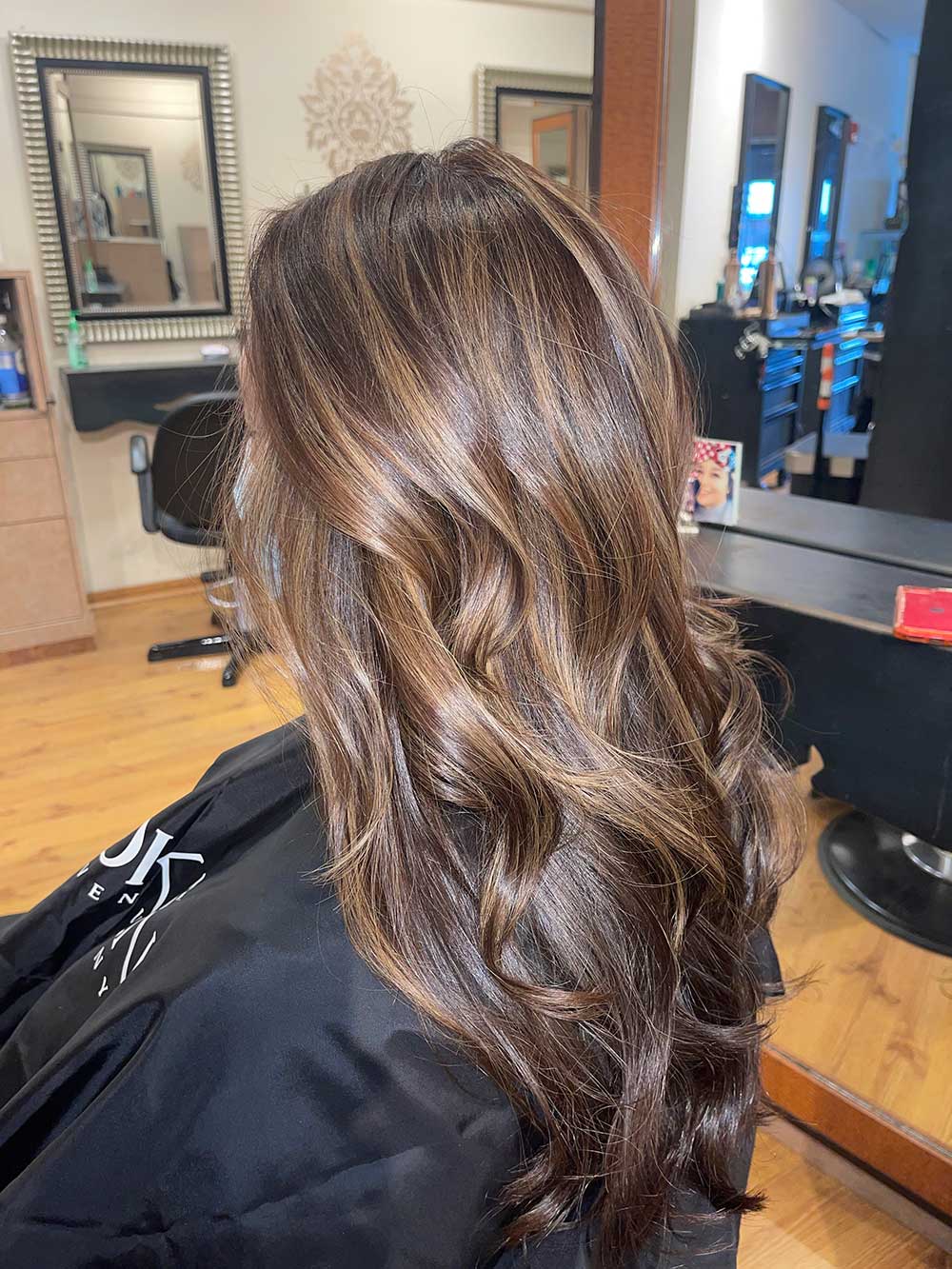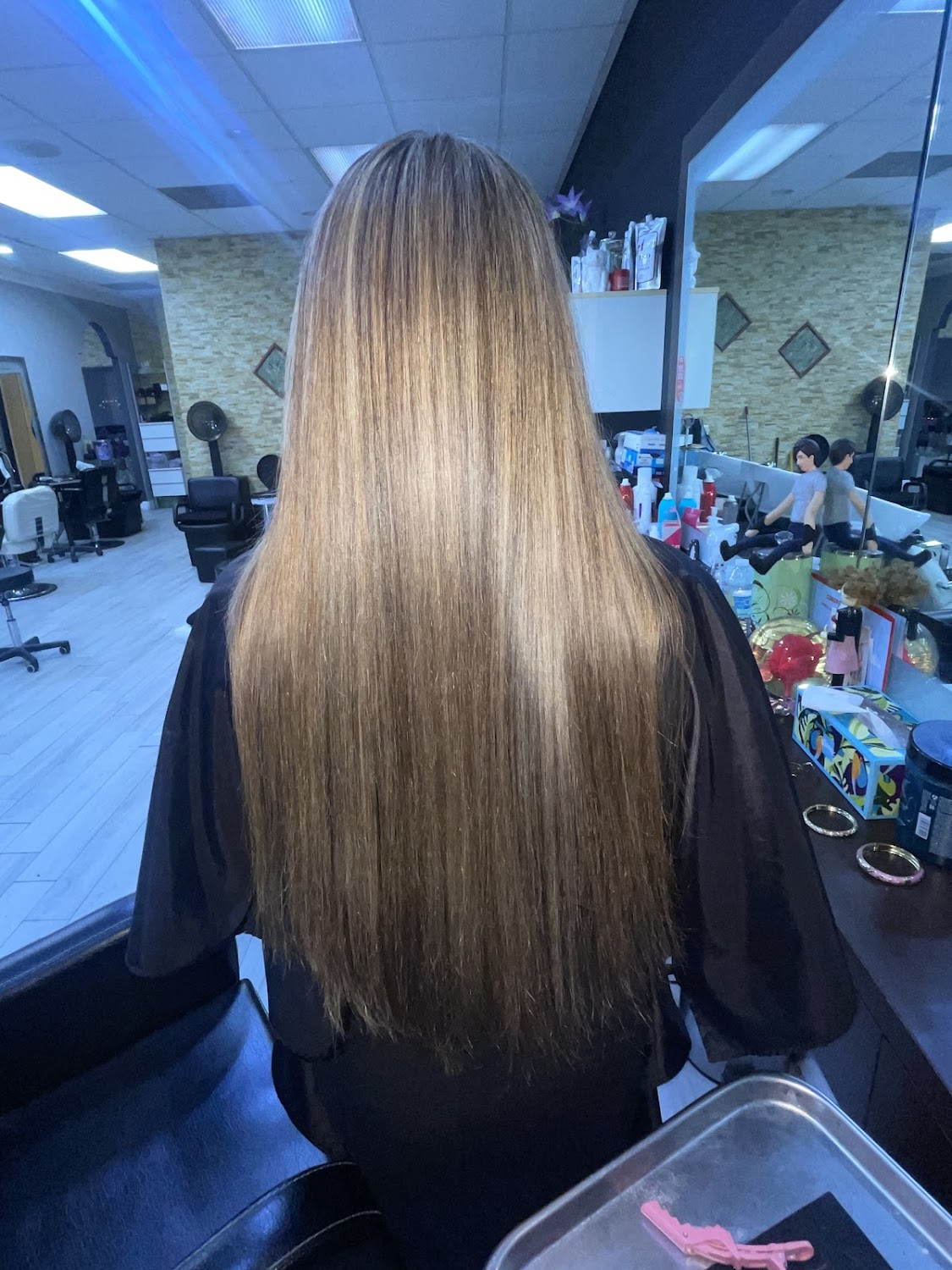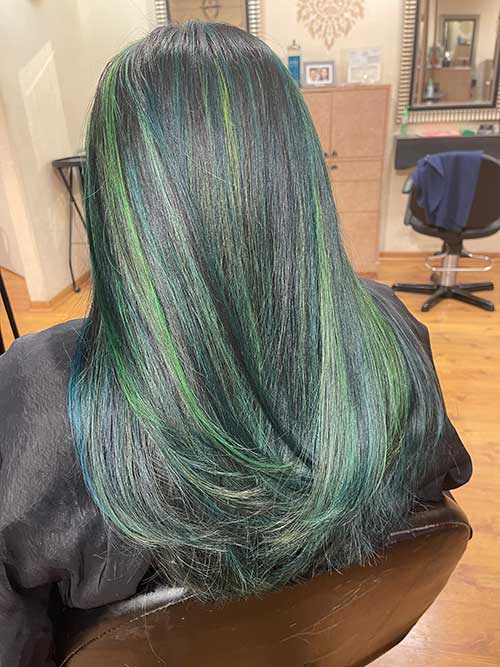Asian hair is naturally thicker, darker, and more resistant to color absorption than other hair types, making it challenging to achieve certain shades without risking damage or uneven results. The strong cuticle layer requires specialized techniques, especially lightening and toning, to prevent brassiness and breakage. Hair coloring can lead to disappointing outcomes without proper expertise, from patchy color to excessive dryness. A hair salon with an Asian hair specialist understands these unique characteristics and applies tailored methods to achieve vibrant, long-lasting results while maintaining hair health.
Understanding the Unique Characteristics of Asian Hair
Asian hair stands out due to its distinct structure, requiring specialized care regarding coloring. Its dense, dark pigments make lifting to lighter shades more challenging, while the strong cuticle layer adds resistance to chemical treatments. These factors influence how hair absorbs and retains color, affecting the final result and long-term maintenance. A closer look at these characteristics explains why a professional approach is essential for achieving vibrant, healthy hair color.
Thicker and Denser Strands
Each strand of Asian hair has a rounder and thicker structure than other hair types. This density makes it appear fuller but requires stronger chemicals to penetrate during the coloring process. A specialist adjusts formulas and techniques to ensure even coverage without excessive damage.
Darker Natural Pigment
Asian hair contains high levels of eumelanin, which gives it a naturally deep black or dark brown color. Lifting this pigment to achieve lighter shades takes multiple processes, often requiring bleaching and toning to remove unwanted brassiness. The result can be uneven without proper expertise, leading to patchy or orange-toned hair.
Stronger Cuticle Layer
The cuticle layer of Asian hair is tightly packed, creating a natural barrier that slows down color absorption. This characteristic makes it more resistant to dyes and requires precise formulation for even saturation. Improper application can lead to color fading quickly or appearing dull instead of vibrant.
Prone to Brassiness
Warm undertones become more noticeable when Asian hair undergoes lightening treatments. Without the right toning products, colors can shift to unwanted yellow, orange, or red hues. A specialist understands how to neutralize these tones, ensuring a balanced, long-lasting shade.
Straight Texture and Oil Distribution
Most Asian hair has a naturally straight structure, allowing oils from the scalp to spread more efficiently. This natural moisture helps maintain shine but can also affect how hair holds color, sometimes leading to faster fading. Proper aftercare, including color-safe products, helps retain vibrancy and prevent premature dullness.
Hair Coloring Challenges for Asian Hair at a Hair Salon
Achieving the perfect shade for Asian hair requires expertise due to its unique structure and pigmentation. A hairstylist must navigate challenges like dark natural pigments, stubborn brassiness, and resistance to color absorption. A hair color specialist understands the precise hair treatments needed to lift color effectively while maintaining hair health. The results can be uneven without proper techniques, leading to damage or unwanted tones. Professional care ensures that each step, from bleaching to toning, is tailored to Asian hair’s specific needs.
Difficulty in Lifting Dark Pigments
Asian hair contains a high concentration of eumelanin, making it harder to lift to lighter shades. A standard bleach session may not be enough, often requiring multiple rounds to reach the desired color. A hair color specialist selects the right developer strength and processing time to minimize damage while achieving the proper lift. Incorrect lifting techniques can lead to patchy results, where some areas turn brassy while others remain dark. Proper expertise ensures an even transition, reducing the risk of excessive dryness or breakage.
High Risk of Brassiness
Warm undertones become prominent when Asian hair is lightened, often resulting in unwanted orange or yellow hues. Toning is essential, yet improper application can leave hair dull or faded. A hairstylist uses specialized toners to neutralize brassiness and achieve cool or ashy shades. Consistent hair treatments, including purple shampoos and color-refreshing masks, help maintain the intended tone. Without these steps, hair can quickly revert to an unappealing warm shade that requires frequent touch-ups.
Resistant Cuticle Layer
The tightly packed cuticle layer in Asian hair makes color penetration difficult, often leading to uneven absorption. Hair dye may sit on the surface without fully depositing, causing inconsistent shades. A hair color specialist preps the hair with pre-lightening techniques or higher-lift formulas to improve absorption. Proper formulation and application timing allow the color to develop fully while keeping the hair’s integrity intact. Rushed or improper processing produces faded, dull results instead of vibrant, long-lasting colors.
Increased Risk of Hair Damage
Frequent bleaching or improper coloring techniques can weaken Asian hair, making it prone to breakage and dryness. After multiple sessions, some hair types experience extreme brittleness, especially overusing bleach. Hair stylists incorporate deep conditioning treatments and bond-repair products to restore moisture and strength. Regular hair treatments, such as keratin masks or Olaplex, help maintain elasticity and reduce the risk of long-term damage. Proper post-color care is crucial in keeping the hair healthy and preventing excessive breakage.
Fast Color Fading
Asian hair’s straight texture allows natural oils to spread more efficiently, which can contribute to faster color fading. Vibrant shades, especially reds and pastels, may lose intensity within weeks if not correctly maintained. A hair color specialist recommends sulfate-free shampoos and color-sealing treatments to extend color longevity. Avoiding excessive heat styling and sun exposure also helps preserve the shade for longer. Without proper maintenance, freshly colored hair can look dull or washed out sooner than expected.

Why an Asian Hair Specialist Makes a Difference
Coloring Asian hair requires more than standard techniques, as its thick strands, dark pigments, and strong cuticle layer demand a specialized approach. An Asian hair specialist can lift color evenly, prevent unwanted brassiness, and maintain hair health. The wrong methods can result in patchy color, excessive damage, or fading that happens too quickly. Expertise in product selection, application techniques, and aftercare makes a noticeable difference in achieving vibrant, long-lasting results.
Expertise in Lifting Dark Hair
Dark pigments in Asian hair make it challenging to achieve lighter shades without multiple bleaching sessions. A specialist selects the right developer strength and timing to lift color effectively while minimizing damage. Proper bleaching techniques ensure an even base, reducing the risk of unwanted orange or yellow tones. Without the right approach, hair can become brittle or unevenly colored.
Precision in Toning and Color Correction
Brassiness is common when lightening Asian hair, requiring precise toning to achieve cool or neutral shades. An Asian hair specialist understands how to use toners correctly, balancing pigments to neutralize unwanted warmth. Choosing the wrong toner or misapplying it can lead to dull or unnatural-looking results. Proper color correction techniques ensure the final shade matches the client’s expectations.
Customized Hair Treatments for Strength and Shine
Bleaching and coloring can weaken hair, making post-treatment care essential for maintaining health and vibrancy. A specialist incorporates bond-repair treatments, deep conditioning, and protein masks to strengthen hair after chemical processes. Neglecting proper aftercare can lead to excessive dryness, breakage, and dullness. Tailored treatments help preserve moisture and prevent long-term damage.
Popular Hair Coloring Techniques for Asian Hair
Coloring techniques for Asian hair must consider its thick strands, natural resistance to dye, and tendency toward warm undertones. Certain methods work better for maintaining dimension, minimizing damage, and ensuring long-lasting vibrancy. A professional approach allows stylists to create smooth color transitions, prevent patchiness, and enhance the overall health of colored hair. Choosing the right technique depends on the desired look, maintenance level, and how much processing the hair can handle.
Balayage for Soft, Natural Blends
Balayage offers a seamless transition between shades, creating a natural, sun-kissed effect. This technique involves hand-painting the color onto sections of hair, allowing for a more gradual lift. Asian hair benefits from this approach because it prevents harsh lines and requires less frequent touch-ups. Proper toning ensures that the lighter sections do not turn brassy over time.
Ombre for Bold Contrast
Ombre features a strong contrast between dark roots and lighter ends, making it a great option for those who want dimension without full commitment. A hair specialist carefully lightens the lower sections while maintaining a smooth gradient to avoid harsh lines. Pre-lightening ensures the lighter tones develop evenly without unwanted orange hues. Correct aftercare, including deep conditioning, helps maintain shine and softness.
Ash and Cool-Toned Shades
Ash brown, ash blonde, and smoky gray tones are popular for Asian hair to counteract natural warmth. Achieving these shades requires careful bleaching and toning to remove underlying brassiness. A color specialist selects the correct toners and maintenance products to keep the shade looking fresh. Regular purple shampoo treatments help neutralize any yellow or orange tones that may appear over time.
Vibrant Fashion Colors for a Bold Look
Bright shades like blue, pink, purple, and green require extensive pre-lightening to achieve maximum vibrancy. Asian hair often needs multiple bleaching sessions to create a light enough base for these colors to appear correctly. A specialist applies color-sealing treatments to extend longevity and prevent rapid fading. Using color-safe products and minimizing heat exposure helps maintain the vibrancy of fashion colors for longer.
Transform Your Hair With the Right Asian Hair Specialist
Achieving the perfect hair color goes beyond choosing a shade—it requires the right expertise to bring out the best in Asian hair. A skilled Asian hair specialist understands the complexities of lifting dark pigments, preventing brassiness, and maintaining hair health. The right techniques ensure vibrant, even color without excessive damage, allowing hair to stay strong and beautiful. Investing in a professional specializing in Asian hair guarantees a smoother coloring experience and long-lasting results. Choosing the right stylist means every transformation enhances both style and confidence.
Get the best advice on hair treatments from Veronica’s Hair Salon and Spa blog, your go-to resource for expert tips from an Asian hair specialist.





